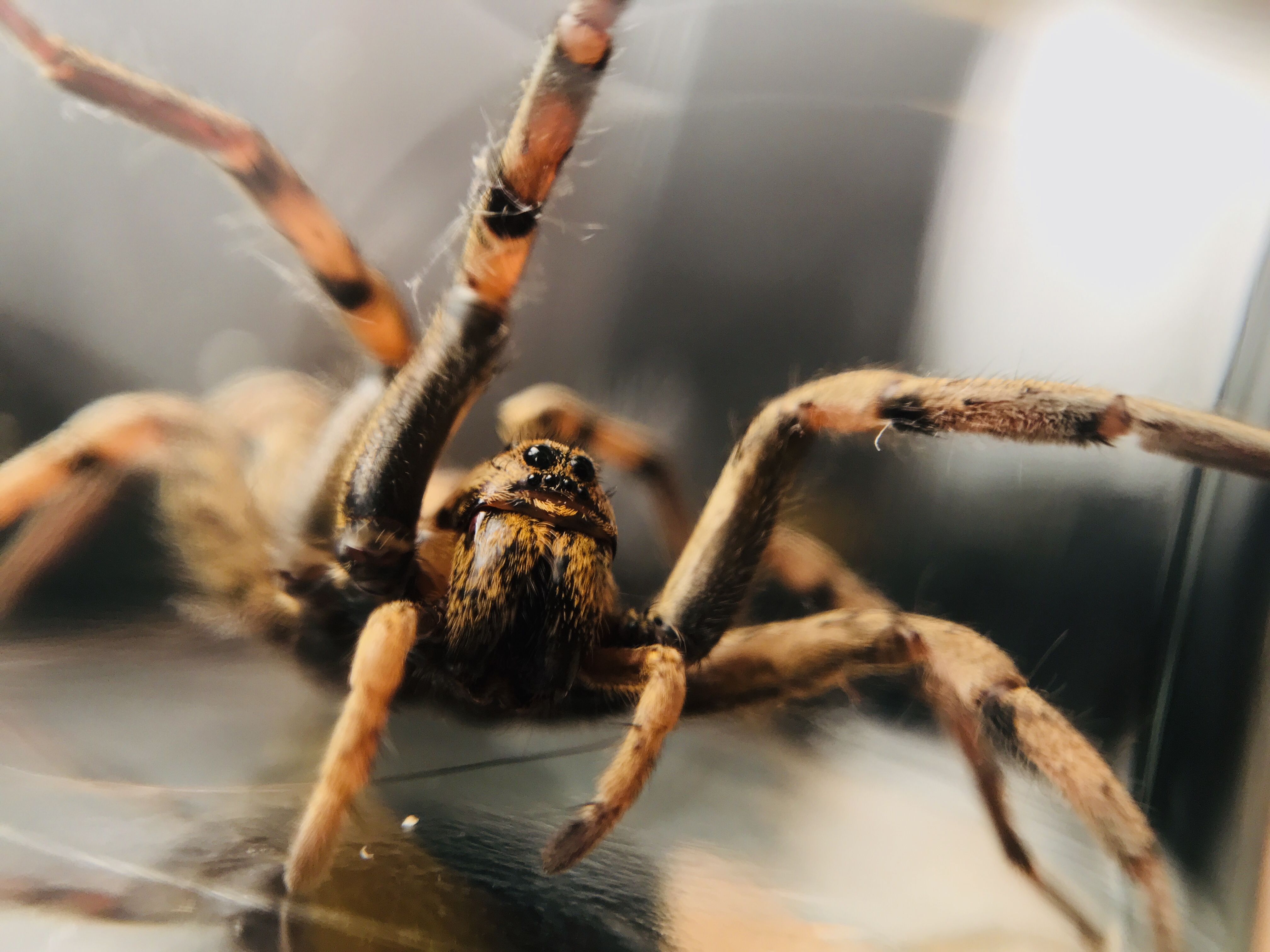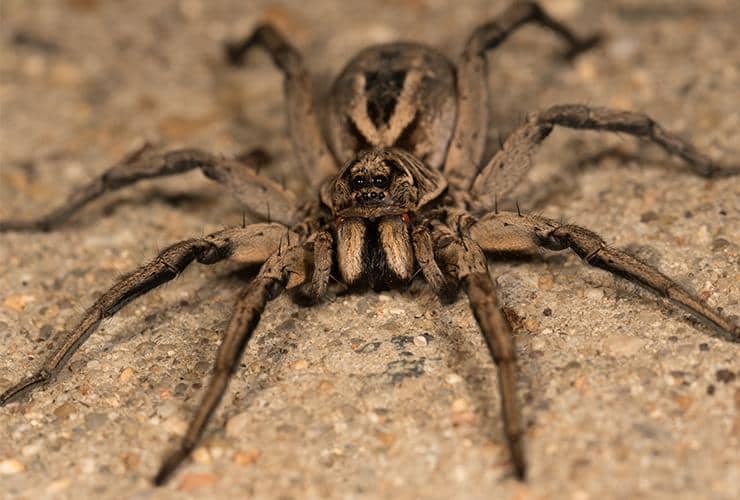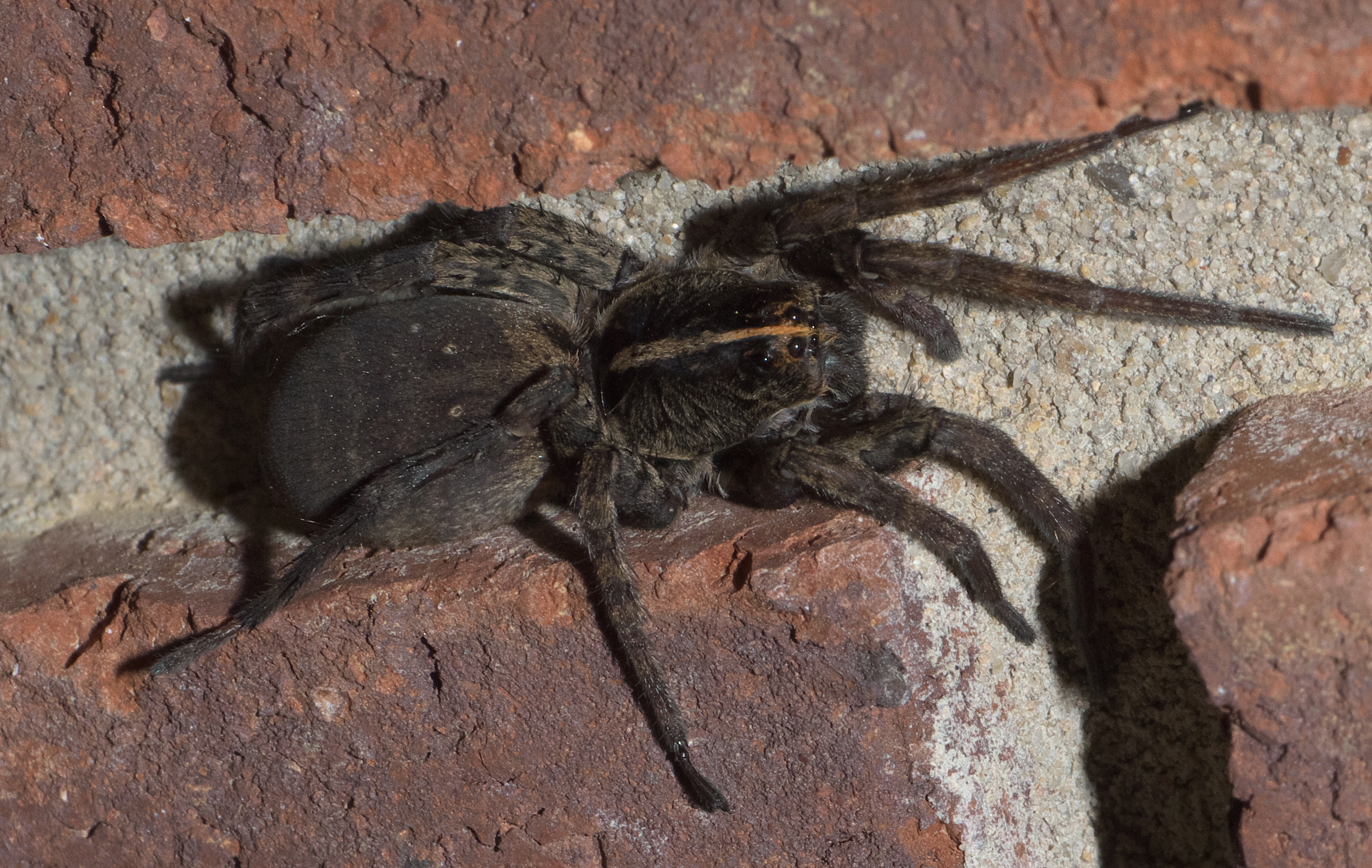Wolf spiders are a fascinating family of arachnids that are known for their robust and hairy appearance, as well as their hunting abilities. Unlike other spiders, they do not spin webs but instead chase and pounce on their prey like wolves, hence their name.
With over 2,900 species in 124 genera, wolf spiders are found all over the world, from deserts to rainforests, grasslands to suburban lawns. They are agile hunters that live on the ground in leaf litter or burrows, and they are often found in lawns and gardens.
You are reading: Discover The 10 Types Of Wolf Spiders
In this article, we will explore the different types of wolf spiders that can be found in various parts of the world, including their size, color, and habitat.

10 Types Of Wolf Spiders
Carolina Wolf Spider

The Carolina Wolf Spider, also known as the Giant Carolina Wolf Spider, is the largest wolf spider in North America. It is scientifically known as Hogna carolinensis and is found across North America, including the southeastern United States.
The Carolina Wolf Spider is a skilled hunter and does not trap prey in webs like other spiders. Instead, it seeks out and attacks its prey. Adult females can reach 22–35 mm, while adult males are smaller, measuring 18–20 mm. They are an overall light brown color, but have darker brown patterning on their backs.
Their undersides are a darker black, and the males can have orange coloration on the sides of their abdomen. Carolina Wolf Spiders are nocturnal and are usually found in grasslands, meadows, and suburban lawns.
They are not aggressive but are skittish and leery of humans, and because of their nervousness and speed, they should not be handled. A bite from this species will only cause some itching, but it’s important to remember that all spiders carry some venom, and some people may be allergic or sensitive to this venom, making a bite more severe.
Tigrosa grandis

Tigrosa grandis is a species of wolf spider that is endemic to the United States. Here are some facts about this species:
– Tigrosa grandis is found in the United States, from Montana to Missouri and south to Texas.
– They belong to the family Lycosidae and the genus Tigrosa.
– Adult females can grow up to 20 mm (0.8 inches) long, while males are smaller.
– They are brown, gray, or black in color.
– Tigrosa grandis is a nocturnal hunter that does not spin webs but instead chases and pounces on its prey.
– They are commonly found in grasslands, meadows, and suburban lawns.
– Tigrosa grandis has been sighted 11 times by contributing observers on iNaturalist.
– There are no photos currently available on Montana Field Guide.
Read more : Types Of Hornets And Which Ones Are Most Aggressive
Overall, Tigrosa grandis is a fascinating species of wolf spider that is found in various parts of the United States. They are skilled hunters that do not spin webs and are commonly found in grasslands and suburban lawns.
Schizocosa mccooki
Schizocosa mccooki is a species of wolf spider that belongs to the family Lycosidae. Here are some facts about this species:
– Schizocosa mccooki is found in western North America, including Canada, the United States, and Mexico.
– They are a large wolf spider, with males ranging from 9.1–15.5 mm (0.35–0.61 in) in body length and females ranging from 9.6–22.7 mm (0.37–0.89 in).
– Schizocosa mccooki is a wandering hunting spider that is commonly found on the ground, but can also be found under grape vine bark.
– They are uncommon in table grapes and are not a major concern.
– Schizocosa mccooki is widespread in open habitats such as grasslands, chaparral, the desert, and pinyon pine forests.
– Some populations of this species have been observed digging burrows.
– There is not much information available about the behavior or ecology of Schizocosa mccooki.
Overall, Schizocosa mccooki is a fascinating species of wolf spider that is found in western North America. They are a large spider that is commonly found on the ground and in open habitats such as grasslands and the desert.
Hogna frondicola
Hogna frondicola is a species of wolf spider that belongs to the family Lycosidae. Here are some facts about this species:
– Hogna frondicola is found in the United States and Canada.
– They are one of the largest spiders found in Montana.
– Hogna frondicola has long legs adapted for running, which they use to hunt for prey at night.
– The carapace of Hogna frondicola generally has a wide gray stripe down the center and white on the edges, with two to four black dots in the center.
– Hogna frondicola spiders have been sighted four times by contributing observers on Spider ID.
– There is not much information available about the behavior or ecology of Hogna frondicola.
Overall, Hogna frondicola is a fascinating species of wolf spider that is found in the United States and Canada. They are one of the largest spiders found in Montana and have long legs adapted for running, which they use to hunt for prey at night.
Geolycosa missouriensis
Geolycosa missouriensis, also known as the burrowing wolf spider, is a species of wolf spider that belongs to the family Lycosidae. Here are some facts about this species:
– Geolycosa missouriensis is found in the United States and Canada.
– They are a large wolf spider, with females ranging from 18–25 mm (0.7–1.0 in) in body length and males ranging from 15–20 mm (0.6–0.8 in).
– Geolycosa missouriensis has a two-year life cycle, with half-grown individuals overwintering in burrows that may be a meter deep.
– They are commonly found in grasslands, prairies, and other open habitats.
– Geolycosa missouriensis is a nocturnal hunter that does not spin webs but instead chases and pounces on its prey.
– They are not aggressive towards humans and will usually flee if disturbed.
– Geolycosa missouriensis spiders have been sighted eight times by contributing observers on Spider ID.
Overall, Geolycosa missouriensis is a fascinating species of wolf spider that is found in the United States and Canada. They are a large spider that is commonly found in grasslands and prairies, and they have a two-year life cycle.
Rabid Wolf Spider
The Rabid Wolf Spider, also known as Rabidosa rabida, is a species of wolf spider that is native to North America. Here are some facts about this species:
Features and Behaviors:
– Rabid Wolf Spiders have four large eyes in a trapezoid shape on the top of the carapace.
– They are an average-sized wolf spider with a total body length of 3/4 inches and a total leg span of about 2 inches.
– Despite their name, Rabid Wolf Spiders are harmless to humans and are not rabid.
– They are commonly found in the United States, from Maine to Florida and west to Texas.
– Rabid Wolf Spiders are known for their erratic and fast movements, which is how they received their name.
– They are hostile toward most other beings, including humans, animals, insects, and even other spiders.
– Rabid Wolf Spiders have several forms of communication. They can release pheromones and receive communication through vibration in their webs.
– Rabid Wolf Spiders are frequent travelers and have adapted to moving as discreetly as possible, usually by staying low in brush and under debris.
Overall, the Rabid Wolf Spider is a fascinating species of wolf spider that is commonly found in the United States. Despite their name, they are harmless to humans and are known for their erratic and fast movements.
Pardosa amentata
Pardosa amentata, also known as the wolf spider or spotted wolf spider, is a species of spider in the genus Pardosa belonging to the family of wolf spiders, Lycosidae. Here are some facts about this species:
– Pardosa amentata has a widespread distribution in central Europe and northwestern Europe and is commonly found on the British Isles.
– The species hunts its prey on the ground rather than weaving a web.
– Pardosa amentata is a wolf spider between 5 mm and 8 mm in length and has a brownish-colored body with darker brown markings or spots.
– Its body is divided into two parts, the cephalothorax and the abdomen. The cephalothorax holds its eight eyes, four pairs of legs, and the jaws, while the abdomen holds silk-producing organs called spinnerets which are situated at the rear.
– Pardosa amentata occurs in a wide range of open habitats, especially in damp situations. It has been recorded from grasslands, marshes, riversides, fens, saltmarsh, and more.
– The tibia and tarsus of the male palp are densely provided with black hairs, and the epigyne has a semilunar anterior part of the septum, with the median part of the septum narrowed.
– Pardosa amentata is the commonest wolf spider and is a familiar sight in spring and early summer as the small, dark spider that often scuttles across bare ground and low herbage in search of prey.
Overall, Pardosa amentata is a fascinating species of wolf spider that is commonly found in central and northwestern Europe, including the British Isles. They are a small spider that hunts its prey on the ground and is commonly found in open habitats, especially in damp situations.
Lycosa tarantula
Read more : Discover 6 Animals Lurking Atop Arizona’s Tallest Mountain
Lycosa tarantula, also known as the Tarantula Wolf Spider, is a species of wolf spider that is found in southern Europe, especially in the Apulia region of Italy and near the city of Taranto, from which it gets its name. Here are some facts about this species:
– Lycosa tarantula is the species originally known as the tarantula, a name that nowadays in English commonly refers to spiders in another family entirely, the Theraphosidae.
– It is a large species of wolf spider that can be distinguished from common wolf spiders by its relatively large size.
– Lycosa tarantula was once associated with tarantism, a dubious affliction whose symptoms included shaking, cold sweats, and a high fever, asserted to be curable only by the traditional tarantella dance. No scientific substantiation of that myth is known; the venom of Lycosa spiders is generally not harmful.
– The species was first described by Carl Linnaeus in 1758 (as Aranea tarantula). It was transferred to the genus Lycosa by Pierre André Latreille in 1806.
– Lycosa tarantula is not closely related to the spiders most commonly called tarantulas today.
– A molecular phylogenetic study in 2013 showed that specimens assigned to the subspecies Lycosa narbonensis were not genetically different from Lycosa tarantula, so it was raised to a full species as Lycosa narbonensis.
– Lycosa tarantula is a nocturnal hunter that does not spin webs but instead chases and pounces on its prey.
Overall, Lycosa tarantula is a fascinating species of wolf spider that is found in southern Europe. It is a large spider that was once associated with tarantism, but its venom is generally not harmful.
Tasmanicosa godeffroyi
Tasmanicosa godeffroyi is a species of wolf spider that is found in some states of Australia. Here are some facts about this species:
– Tasmanicosa godeffroyi is perhaps the most commonly noticed of the wolf spiders in Australia.
– They are a mid-sized spider that is variable in pattern and color, though the underside of the abdomen is usually dark.
– The Garden Wolf Spider is large and strongly patterned in grey, brown, and white.
– Tasmanicosa godeffroyi is probably the most common Tasmanicosa species found in most coastal areas of Australia.
– Like other wolf spiders, Tasmanicosa godeffroyi is a robust, agile, fast-moving ground hunter that chases down or ambushes prey.
– The Garden Wolf Spider is a dedicated mother. Like other members of the family Lycosidae, she carries her newly hatched spiderlings on her back.
– There is not much information available about the behavior or ecology of Tasmanicosa godeffroyi.
Overall, Tasmanicosa godeffroyi is a fascinating species of wolf spider that is found in Australia. They are a mid-sized spider that is variable in pattern and color, and they are a dedicated mother that carries her spiderlings on her back.
Venatrix fuliginosa
Venatrix fuliginosa is a species of wolf spider that belongs to the genus Venatrix, which is native to Australia. Here are some facts about this species:
– Venatrix fuliginosa is also known as the Black Venatrix.
– It is a mid-sized spider that is dark brown to black in color.
– Venatrix fuliginosa is a nocturnal hunter that does not spin webs but instead chases and pounces on its prey.
– They are commonly found in open habitats such as grasslands, woodlands, and heathlands.
– There is not much information available about the behavior or ecology of Venatrix fuliginosa.
Overall, Venatrix fuliginosa is a fascinating species of wolf spider that is found in Australia. They are a mid-sized spider that is dark brown to black in color and are commonly found in open habitats such as grasslands and woodlands.
FAQS
1. What are wolf spiders?
Wolf spiders are a family of arachnids that are known for their robust and hairy appearance, as well as their hunting abilities. They are usually black or brown, with long, powerful legs mainly adapted for running. Most of the thousands of species in this family don’t spin webs; instead, they chase and pounce on their insect prey like the wolves that inspire their name.
2. Where are wolf spiders found?
Wolf spiders are found all over the world, from deserts to rainforests, grasslands to suburban lawns. They are particularly common in meadows and grasslands, but they can also live in wetlands, deserts, and mountains.
3. Are wolf spiders dangerous?
Wolf spiders are not considered dangerous to humans, although they can bite if provoked or threatened. Their venom is not harmful to humans, but it can cause some itching or swelling.
4. What do wolf spiders eat?
Wolf spiders are insectivores and mainly feed on insects such as ants, grasshoppers, and other small spiders. They are skilled hunters that do not spin webs but instead chase and pounce on their prey.
5. How big do wolf spiders get?
The size of wolf spiders varies depending on the species, but they can range from 0.24 to 1.2 inches in length. Some species, such as the Carolina Wolf Spider, can grow up to 2 inches long.
6. What are some types of wolf spiders?
There are around 2,900 species of wolf spiders in 124 genera, making it hard to distinguish between them. However, some of the types of wolf spiders that can be found in different parts of the world include the Carolina Wolf Spider, Tigrosa grandis, Schizocosa mccooki, Hogna frondicola, Geolycosa missouriensis, Rabid Wolf Spider, Pardosa amentata, Lycosa tarantula, Tasmanicosa godeffroyi, and Venatrix fuliginosa.
Source: https://petstutorial.com
Category: Animals










